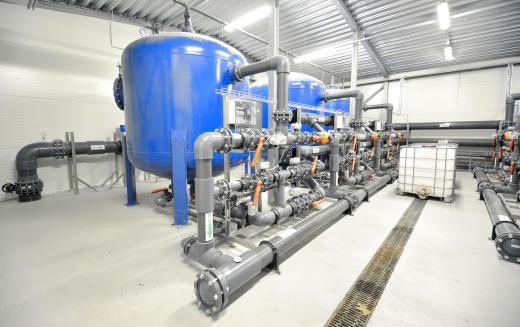A hydrostatic test is a test which measures the strength or structural integrity of pressurized containers that hold a liquid or gas. Containers that may be tested include boilers, gas cylinders or the pipes in a water system. The test ensures that there aren't any leaks in the container and that it is structurally safe to operate.
To perform a hydrostatic test, the container is typically placed into a steel chamber that is filled with water under normal pressure. Subsequently, pressurized water is pumped into the container being tested. The container will expand, forcing water out of the steel chamber, and then contract once the pressure is released, forcing the water to return into the steel chamber. The amount of water that leaves and returns to the steel chamber is used to determine whether the tested container passes or fails the hydrostatic test.

Fire extinguishers usually undergo a hydrostatic test to ensure that they are safe. Over time, the casing which holds the fire repellent material may weaken and lose integrity, which can lead to malfunction or even a rupture. The cylinder, hose, shell and assembly are pressure tested to check for leaks.
Before the cylinder of a fire extinguisher is placed in the hydrostatic chamber, the valve is removed and a visual inspection of the interior is conducted. Signs of corrosion and structural defects may cause a failure of the cylinder under pressurized conditions. If everything appears to be normal, the hydrostatic test is started.
A high pressure water pipe is attached to the cylinder, which is then placed in a steel chamber filled with water. Water is pumped into the cylinder. As the water pressure within the cylinder increases, the walls of the cylinder began to expand, forcing the water within the chamber to move. The water typically exits the chamber through a small outlet and collects in a burette, or laboratory measuring device, situated on the exterior of the chamber. Once the pressure is reduced within the cylinder, the walls of the cylinder contract, which causes the water in the burette to return to the chamber.
The burette provides a measurement for the amount of water that has been forced out of the chamber. It also measures the amount of water that has returned to the chamber. Typically, if the amount of water remaining in the burette is greater than ten percent of the amount that was initially forced out of the chamber, then the tested cylinder has failed the hydrostatic test.
